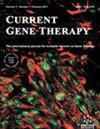Single Injection AAV2-FGF18 Gene Therapy Reduces Cartilage Loss and Subchondral Bone Damage in a Mechanically Induced Model of Osteoarthritis
IF 3.8
4区 医学
Q2 GENETICS & HEREDITY
引用次数: 0
Abstract
Background:: Osteoarthritis (OA) is a highly debilitating, degenerative pathology of cartilaginous joints affecting over 500 million people worldwide. The global economic burden of OA is estimated at $260-519 billion and growing, driven by aging global population and increasing rates of obesity. To date, only the multi-injection chondroanabolic treatment regimen of Fibroblast Growth Factor 18 (FGF18) has demonstrated clinically meaningful disease-modifying efficacy in placebo-controlled human trials. Our work focuses on the development of a novel single injection disease-modifying gene therapy, based on FGF18’s chondroanabolic activity. Methods:: OA was induced in Sprague-Dawley rats using destabilization of the medial meniscus (DMM) (3 weeks), followed by intra-articular treatment with 3 dose levels of AAV2-FGF18, rh- FGF18 protein, and PBS. Durability, redosability, and biodistribution were measured by quantifying nLuc reporter bioluminescence. Transcriptomic analysis was performed by RNA-seq on cultured human chondrocytes and rat knee joints. Morphological analysis was performed on knee joints stained with Safranin O/Fast Green and anti-PRG antibody. Results:: Dose-dependent reductions in cartilage defect size were observed in the AAV2-FGF18- treated joints relative to the vehicle control. Total defect width was reduced by up to 76% and cartilage thickness in the thinnest zone was increased by up to 106%. Morphologically, the vehicle- treated joints exhibited pronounced degeneration, ranging from severe cartilage erosion and bone void formation, to subchondral bone remodeling and near-complete subchondral bone collapse. In contrast, AAV2-FGF18-treated joints appeared more anatomically normal, with only regional glycosaminoglycan loss and marginal cartilage erosion. While effective at reducing cartilage lesions, treatment with rhFGF18 injections resulted in significant joint swelling (19% increase in diameter), as well as a decrease in PRG4 staining uniformity and intensity. In contrast to early-timepoint in vitro RNA-seq analysis, which showed a high degree of concordance between protein- and gene therapy-treated chondrocytes, in vivo transcriptomic analysis, revealed few gene expression changes following protein treatment. On the other hand, the gene therapy treatment exhibited a high degree of durability and localization over the study period, upregulating several chondroanabolic genes while downregulating OA- and fibrocartilage-associated markers. Conclusion:: FGF18 gene therapy treatment of OA joints can provide benefits to both cartilage and subchondral bone, with a high degree of localization and durability.单次注射 AAV2-FGF18 基因疗法可减少机械诱导骨关节炎模型中的软骨损失和软骨下骨损伤
背景::骨关节炎(OA)是一种使人极度衰弱的软骨关节退行性病变,影响着全球 5 亿多人。据估计,OA 给全球造成的经济负担高达 2,600-5,190 亿美元,而且在全球人口老龄化和肥胖率上升的推动下,这一数字还在不断增长。迄今为止,只有成纤维细胞生长因子 18(FGF18)的多次注射软骨代谢治疗方案在安慰剂对照人体试验中显示出有临床意义的疾病改变疗效。我们的工作重点是基于 FGF18 的软骨代谢活性,开发一种新型的单次注射改变疾病基因疗法。方法::使用内侧半月板失稳(DMM)诱导 Sprague-Dawley 大鼠发生 OA(3 周),然后用三种剂量的 AAV2-FGF18、rh- FGF18 蛋白和 PBS 进行关节内治疗。通过量化 nLuc 报告生物发光来测量耐久性、可再利用性和生物分布。对培养的人类软骨细胞和大鼠膝关节进行了 RNA-seq 转录组分析。用 Safranin O/Fast Green 和抗PRG 抗体染色膝关节,进行形态学分析。结果与药物对照组相比,AAV2-FGF18 处理的关节中软骨缺损大小的减少呈剂量依赖性。总缺损宽度最多可减少 76%,最薄区域的软骨厚度最多可增加 106%。从形态上看,经载体处理的关节表现出明显的退化,从严重的软骨侵蚀和骨空洞形成,到软骨下骨重塑和近乎完全的软骨下骨塌陷。相比之下,AAV2-FGF18处理过的关节在解剖学上更为正常,只有区域性糖胺聚糖损失和边缘软骨侵蚀。注射 rhFGF18 虽然能有效减少软骨损伤,但会导致关节明显肿胀(直径增加 19%),PRG4 染色的均匀性和强度也会下降。早期时间点体外 RNA-seq 分析显示,蛋白治疗和基因治疗软骨细胞之间的一致性很高,而体内转录组分析则显示,蛋白治疗后基因表达几乎没有变化。另一方面,基因治疗在研究期间表现出高度的持久性和定位性,上调了多个软骨代谢基因,同时下调了 OA 和纤维软骨相关标记。结论FGF18基因疗法治疗OA关节可使软骨和软骨下骨受益,并具有高度的局部性和持久性。
本文章由计算机程序翻译,如有差异,请以英文原文为准。
求助全文
约1分钟内获得全文
求助全文
来源期刊

Current gene therapy
医学-遗传学
CiteScore
6.70
自引率
2.80%
发文量
46
期刊介绍:
Current Gene Therapy is a bi-monthly peer-reviewed journal aimed at academic and industrial scientists with an interest in major topics concerning basic research and clinical applications of gene and cell therapy of diseases. Cell therapy manuscripts can also include application in diseases when cells have been genetically modified. Current Gene Therapy publishes full-length/mini reviews and original research on the latest developments in gene transfer and gene expression analysis, vector development, cellular genetic engineering, animal models and human clinical applications of gene and cell therapy for the treatment of diseases.
Current Gene Therapy publishes reviews and original research containing experimental data on gene and cell therapy. The journal also includes manuscripts on technological advances, ethical and regulatory considerations of gene and cell therapy. Reviews should provide the reader with a comprehensive assessment of any area of experimental biology applied to molecular medicine that is not only of significance within a particular field of gene therapy and cell therapy but also of interest to investigators in other fields. Authors are encouraged to provide their own assessment and vision for future advances. Reviews are also welcome on late breaking discoveries on which substantial literature has not yet been amassed. Such reviews provide a forum for sharply focused topics of recent experimental investigations in gene therapy primarily to make these results accessible to both clinical and basic researchers. Manuscripts containing experimental data should be original data, not previously published.
 求助内容:
求助内容: 应助结果提醒方式:
应助结果提醒方式:


